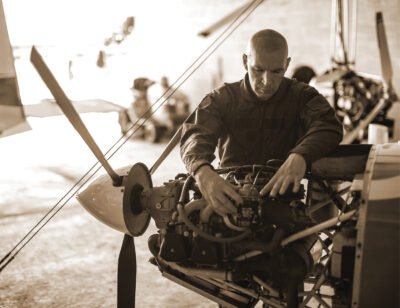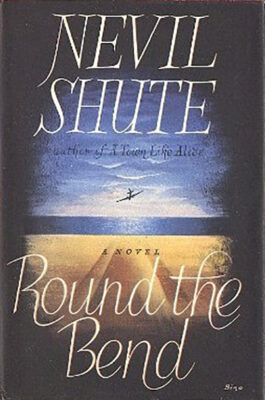 Combining in a single profession—in a single day’s work, sometimes—mathematics, law, field work, historical investigation and sundry other skills, land surveying is rightly called an art, and my father in art was a PLS and business owner in California, who hired me 35 years ago—partly out of pity I think—and trained me in this profession of ours, the noblest of trades. Ken, I soon realized, was one of the finest and most respected boundary experts in California, and his professional ethic was based on relentless pursuit of evidence and accuracy, Talmudic devotion to land law, clear thinking, blazing intelligence, and the sort of scrupulous, detail-oriented honesty that can be damned annoying at times.
Combining in a single profession—in a single day’s work, sometimes—mathematics, law, field work, historical investigation and sundry other skills, land surveying is rightly called an art, and my father in art was a PLS and business owner in California, who hired me 35 years ago—partly out of pity I think—and trained me in this profession of ours, the noblest of trades. Ken, I soon realized, was one of the finest and most respected boundary experts in California, and his professional ethic was based on relentless pursuit of evidence and accuracy, Talmudic devotion to land law, clear thinking, blazing intelligence, and the sort of scrupulous, detail-oriented honesty that can be damned annoying at times.
I assumed for weeks that all land surveyors were of this character, as improbable and intimidating as that seemed. But as I gained experience I eventually realized (with some relief) that my mentor was, in fact, special; even in a profession noted for the probity and skill of its practitioners, Ken stood out. In retrospect, after years of practice in several states and comparing his professional ethic to that of myself and peers, I think of him as nearly a nonpareil among surveyors; so devoted to the art that he was uniquely excellent. He was certainly a fine mentor, and any excellence achieved in my own career(s) is due to him.
Be Like Ken
What made him that way, do you think? Was he just naturally smart and talented and virtuous, ‘born that way’ we might say? Or was there some external factor in his upbringing or adult life that forged his character into the sturdy, exemplary thing it was? I think Ken, had I thought to ask, would have pointed to his religion. For he was religious, fervently so, as was I… at the time. Ken was a lay minister in his congregation, a student of the Bible, and a skillful proselytizer. And at the same time, he was the best land surveyor I have ever known. For Ken, I think, those were not two facts about his life, but one fact.
I suppose it is obvious that the integration of spirituality and professional excellence has been an idée fixe of mine ever since I had the good fortune to be initiated into the art of land surveying by a master. I’ve followed that fixation into some strange regions; my first column for American Surveyor, for example, drew attention to (what I see as) the Kaballistic underpinnings of the PLSS, and I’ve written here at length about architect Christopher Alexander and my belief that his books will someday read as reverently as scripture. Possibly I’ve gone ‘round the bend;’ allowed my interests and inclinations to overwhelm me and make it impossible to usefully communicate with my peers about an idea that I consider integral to our trade.
Fortunately, I know of a writer that addresses the topics of spirituality and professional excellence in a novel both entertaining and profound, written in plain, precise language that will be appreciated by anyone attempting make or maintain better infrastructure.
Round the Bend by Nevil Shute
 Per Wikipedia, “Nevil Shute Norway (17 January 1899 – 12 January 1960) was an English novelist and aeronautical engineer who spent his later years in Australia. He used his full name in his engineering career and Nevil Shute as his pen name, in order to protect his engineering career from inferences by his employers or from fellow engineers that he was ‘”not a serious person” or from potentially adverse publicity in connection with his novels.” (emphasis added)
Per Wikipedia, “Nevil Shute Norway (17 January 1899 – 12 January 1960) was an English novelist and aeronautical engineer who spent his later years in Australia. He used his full name in his engineering career and Nevil Shute as his pen name, in order to protect his engineering career from inferences by his employers or from fellow engineers that he was ‘”not a serious person” or from potentially adverse publicity in connection with his novels.” (emphasis added)
So, a serious and accomplished engineer—Shute was made a Fellow of the Royal Aeronautical Society for his work on military dirigibles and the Airspeed Courier—who was uneasy about his double life as a writer (I can relate). And a prolific writer, too; producing a book every two years or so, he published 24 novels (two, On the Beach and A Town Like Alice were bestsellers and became a movie and mini-series) and an autobiography.
Round the Bend was his personal favorite and might be the most loved by his admirers. On one level, it tells the quite interesting story of Tom Cutter, who catches the aviation bug in 1930’s England, apprentices as an aviation engineer (a certified aircraft mechanic, basically), becomes a pilot too, does overseas military-related aviation work during World War II, and ends up starting an air cargo and transport business in Bahrain (Cutter is clearly a surrogate for Shute). But on another plane entirely—see what I did there?—Round the Bend is the story of Cutter’s encounters with Connie Shaklin, who he befriends as a young man, and meets again as he is starting his business in Bahrain. In their years apart, Connie (also an aviation engineer) has become devoted to the art of aircraft maintenance to the point of religious fanaticism. Indeed, Cutter wonders if he’s gone round the bend. Though Connie is certainly a superlative mechanic…
Two Passages from Round the Bend
As Cutter is considering hiring Connie, and worrying a bit about his spiritual beliefs, he asks his former employer for a reference:
“He’s got some mighty strange ideas for an engineer,” said Schafter. “It’s a thing you ought to know about him since you’re taking him on. About religion, and all that.”
“Does it affect his work?”
“I’ll say it does. It makes his work a whole lot better.”
Connie begins to speak of spirituality in work to the Muslim mechanics in Cutter’s hangar in Bahrain:
“But we are not like that, we engineers. We are men of understanding and of education, on whom is laid the responsibility that men may travel in these aeroplanes as safely as if they were sitting by the well in the cool of evening…
With every piece of work you do, with every nut you tighten down, with every filter that you clean or every tappet that you set, pause at each stage and turn to Mecca, and fold your hands, and humbly ask the All-Seeing God to put into your heart the knowledge whether the work that you have done has been good or ill. Then you are to stand for half a minute with your eyes cast down, thinking of God and of the job, and God will put into your heart the knowledge of good or ill. So, if the work is good you may proceed in peace, and if it is ill you may do it over again, or come to me and I will help you to do well before God.”
Spirituality in the Workplace
 Two questions hover over all of Round the Bend: ‘What religion is Connie?’ and ‘Is Connie merely a spiritually inclined man, or is he, in fact, a prophet of God—or even actually God, walking on Earth?.’ And these are questions I think anyone ambitious to do work might ask.
Two questions hover over all of Round the Bend: ‘What religion is Connie?’ and ‘Is Connie merely a spiritually inclined man, or is he, in fact, a prophet of God—or even actually God, walking on Earth?.’ And these are questions I think anyone ambitious to do work might ask.
Answering the first of these, we see Connie working directly with Sikh, Muslim, Hindu, and Buddhist engineers, influencing them all and approached with reverence by the religious leaders of all their various congregations. But he remains fairly adamant that he himself is not a member of any particular religion. He encourages the placement of appropriate icons (for example, an image of the Buddha) in hangars, and observance of customs (such as daily prayers) outside the hangars, in which he participates in a courteously detached way—during Islamic prayers, for example, he will kneel in meditation alongside the observant but does not go participate in ritual motions.
Less clear is the question of Connie’s divinity. He himself is ambivalent on the matter, usually stating plainly that he is not God. But as he gains a large following of reverent believers of all religions—who call him “the Teacher” and accept him as a prophet—he begins to entertain the idea, almost as if he is remembering who he really is.
Well, I do go on; if anything I write above strikes a chord in you, please read Round the Bend for yourself. It’s not an especially long or difficult novel, and your first reading be will quick and entertaining. Put another way, Round the Bend is a good investment of your valuable professional time, as much as any textbook or professional development hour… and at least as likely to make you a better land surveyor.
Angus Stocking is a former licensed land surveyor who has been writing about infrastructure since 2002.